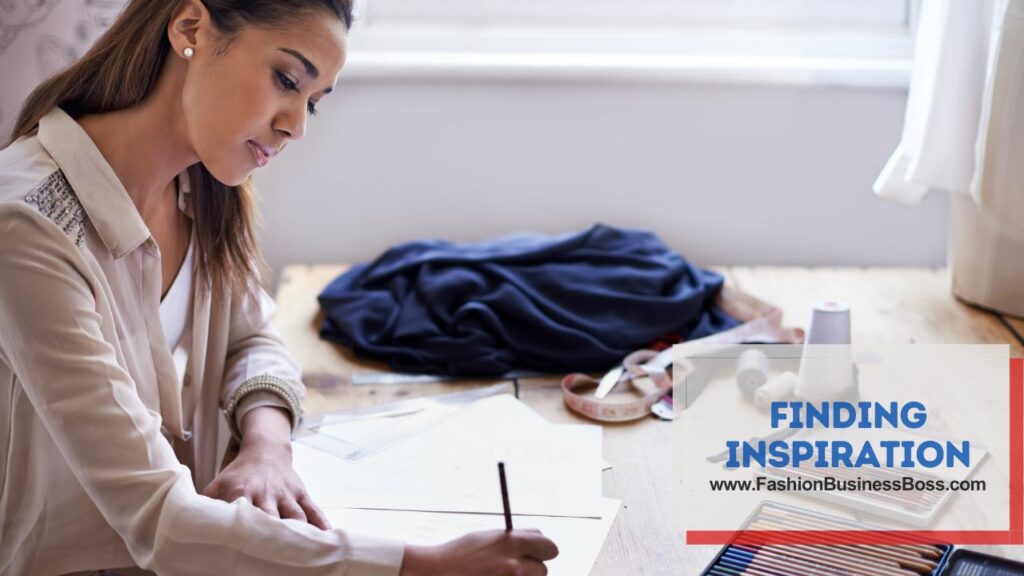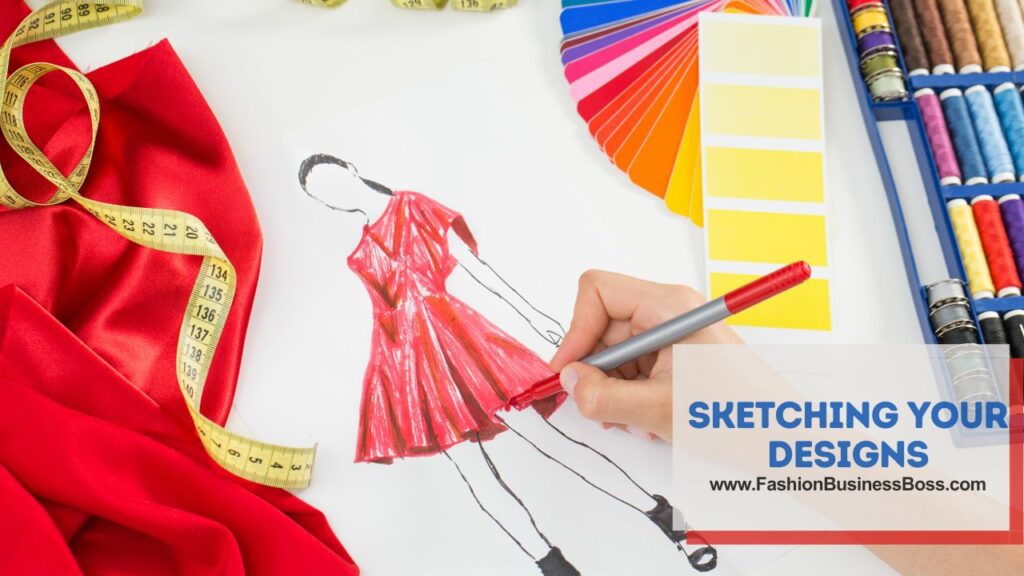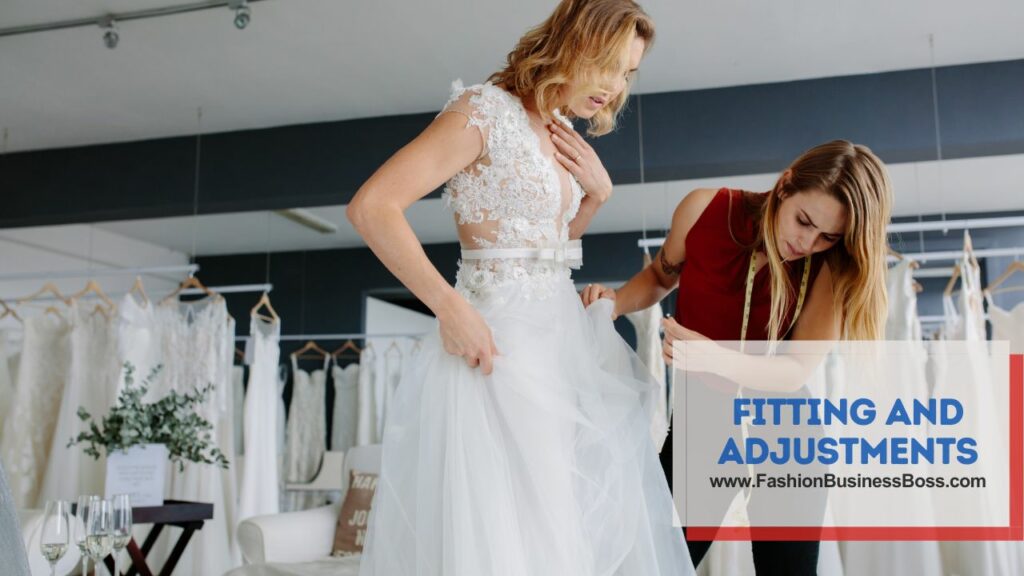Are you tired of wearing the same clothes everyone else is wearing? Do you have a unique fashion sense that you want to express? Designing your own clothes can be a fulfilling and exciting experience that allows you to stand out from the crowd.
To showcase your fashion brand effectively, build a strong online presence through social media and a website. Share your design stories and connect with potential customers who appreciate unique, handmade creations.
In this article, we will take you through the step-by-step process of designing your own clothes.
Finding Inspiration: Embrace Your Creativity

To effectively promote your fashion brand, it’s crucial to establish a solid online presence through social media and a personal website. This will allow you to reach a broader audience and connect with potential customers who share an appreciation for unique, handcrafted clothing. Building and maintaining a website can range in cost, depending on your needs, but a basic website can be set up for as little as $100 to $200 per year, including domain registration and hosting fees.
On social media platforms like Instagram, Facebook, and Pinterest, you can showcase your designs, share your design process, and engage with your audience. These platforms are generally free to use, but investing in some targeted advertising can help expand your reach even further. Costs for social media advertising can vary, but starting with a budget of $50 to $100 per month can make a noticeable difference.
Also, consider participating in local fashion events and collaborating with other designers or influencers to gain exposure within the fashion community. These networking opportunities can be relatively low-cost or even free, but they can lead to valuable connections and potential collaborations in the future.
By investing time and resources into your online presence and networking efforts, you can effectively promote your fashion brand and connect with those who appreciate your unique creations.
Read more about: How to Make Your Own Clothes: Crafting Wearable Art
Researching Fashion Trends: A Blend of Tradition and Innovation
To gain insights into current fashion trends, you’ll want to strike a balance between staying true to your personal style and staying informed about the ever-changing world of fashion. One way to do this is by exploring various sources like fashion magazines, which can cost around $20 to $30 per issue or less if you opt for digital subscriptions. These publications showcase the latest runway looks and emerging styles, helping you understand what’s currently in vogue.
Engaging with fashion bloggers and influencers on social media platforms is another cost-effective approach. Following them and interacting with their content is typically free. By doing so, you can absorb fresh perspectives and creative interpretations of fashion trends.
Consider attending local fashion events, which may involve a modest entry fee ranging from $10 to $50 or more, depending on the event’s scale and location. These events provide firsthand exposure to the dynamic interplay between tradition and innovation within the fashion industry.
By exploring these sources and investing in some fashion magazines and event attendance, you can keep a finger on the pulse of fashion trends while preserving your unique style. This blend of tradition and innovation will enrich your design journey.
Understanding Fabrics and Materials: The Foundation of Your Design
The foundation of any clothing design lies in selecting the right fabrics and materials. This choice goes beyond just looks; it affects how your garment feels and functions. Fabrics determine the overall appearance, texture, weight, and breathability of your creation. The cost of fabrics can vary widely, from a few dollars per yard for basic materials to over $20 per yard for high-end or specialty fabrics.
Understanding the properties of different materials is essential. Cotton offers a classic look and is breathable, while silk adds a luxurious touch but can be delicate. Denim has timeless appeal and durability, and sustainable materials are eco-conscious but may come at a higher price. It’s crucial to comprehend how fabrics drape and flow, as this influences the garment’s silhouette and comfort.
Pairing fabrics and materials skillfully is an art form. By making informed choices and harmonizing them with your design vision, you create clothing that’s both stylish and comfortable. Whether it’s a silk evening gown or a denim jacket, your well-informed decisions form the basis for designs that captivate and enchant.
Sketching Your Designs: Transforming Ideas Into Reality

As you progress in your fashion design journey, the power of sketching becomes evident. Armed with inspiration and fabric knowledge, your trusty pencil acts as a magic wand, turning abstract ideas into tangible realities on paper. You don’t need to be an expert artist; simple line drawings suffice to convey your creative vision.
Sketching breathes life into your design concepts, allowing you to visualize the garment’s silhouette, proportions, and intricate details before working with fabric. Sketching is a cost-effective aspect of the design process, requiring only basic art supplies like pencils, erasers, and sketchbooks, which can cost anywhere from $5 to $20 or more.
Every stroke on paper defines your garment’s essence, capturing the interplay of style and functionality. Each sketch serves as a blueprint, guiding you through the design journey with purpose and direction. This transformation from inspiration to sketch lays the groundwork for subsequent steps, ensuring your vision is carefully honed and ready to come to life as a beautifully crafted garment.
Embrace the art of sketching, as it’s an integral part of bringing your clothing designs into the real world. It’s where your creative vision begins to take shape and guide you toward your final masterpiece.
Read more about: How to Make Your Mark in Fashion: Starting a Clothing Line
Pattern Making: The Blueprint of Your Garment
Pattern making is a pivotal stage in the journey of designing your own clothes, where imagination transitions into a tangible form. Using your sketches as a foundation, you delve into the art of pattern making, a skill that marries precision and creativity. Patterns act as the blueprint for your design, guiding you on how to cut and sew the fabric to bring your vision to life. For beginners, there are various online tutorials and books on pattern making, with costs ranging from free online resources to $20 or more for instructional books.
Patterns are the key to creating a garment that fits well and looks as you envisioned. They dictate how each piece of fabric comes together, from seams to curves, ensuring a seamless blend of aesthetics and functionality. Your patterns allow you to fine-tune every intricate detail, transforming your design into a distinct creation that embodies your artistic vision.
Pattern making is a dynamic interplay between technique and creativity. Each mark on the pattern paper breathes life into your design, tracing the contours of your garment’s unique form. As your patterns evolve, your design evolves with them, becoming an entity that reflects your artistic vision. Embrace the art of pattern making, for within its intricacies lies the essence of your wearable art, destined to enchant and captivate those who behold it.
Sewing Techniques: Bringing Your Clothes to Life
As you move forward in the process of making your own clothes, sewing becomes a crucial step where your creativity and craftsmanship come together to make your clothing designs a reality. Whether you’re using a sewing machine or sewing by hand, mastering basic sewing techniques is essential. You can get a basic sewing machine for around $100 to $200, and sewing supplies like needles, threads, and scissors typically cost about $20 to $30.
Each stitch you carefully sew plays a role in creating your garment, turning pieces of fabric into a complete and stylish piece of clothing. With every seam, button, and zipper, you’re making sure your creation not only looks good but also functions well. It’s important to be patient and practice your sewing skills, from the basics to more complex details, as every stitch contributes to making your design exceptional.
As you work with the needle and fabric, your designs start to take shape. Each stitch tells a story of your creativity and skill, where your artistic expression meets practicality. From the moment you have an idea to the final touches, sewing is a journey of transformation. It’s where you become a true fashion artisan, giving your garments a unique character that connects with the people who wear them. In the rhythm of sewing, you’ll find the magic that brings your clothes to life, capturing the hearts and minds of those who see and wear them.
Fitting and Adjustments: Ensuring the Perfect Fit

Achieving the perfect fit for your clothes is a crucial step in the process of designing your own garments. It ensures that your creations not only look good but also feel comfortable to wear. During this stage, you’ll want to wear the garment you’ve crafted and assess how it fits your body. Pay close attention to how it hugs your curves and how comfortable it feels. It’s like tailoring your clothes to match your unique shape.
Precision in measurement is key to making the necessary adjustments. You might need to lengthen or shorten hems, take in or let out seams, or tweak other details to achieve that ideal fit. These adjustments may require some sewing skills and patience. The cost associated with this stage can vary, depending on whether you do it yourself or hire a professional tailor. Doing it yourself may only require investing in some sewing supplies, which can cost around $20 to $30. However, if you opt for a professional tailor, the cost can range from $20 to $100 or more, depending on the complexity of the adjustments needed.
This phase is all about refining your garment until it complements your body’s unique shape and makes you feel comfortable. It’s an essential part of the design process that ensures your clothing not only looks great but also fits perfectly, enhancing your overall style and comfort.
Read more about: How to Make Clothes to Sell: Fashion Your Dreams
Showcasing Your Designs: Building Your Fashion Brand
Once you’ve created a collection of beautifully crafted garments, it’s time to showcase your designs to the world. Building your fashion brand involves creating an online presence and connecting with potential customers who appreciate your unique creations.
To begin, consider setting up a personal website or using social media platforms like Instagram, Facebook, or Pinterest. These platforms are generally free to use. The cost of building and maintaining a website can vary but may range from $100 to $300 or more per year, including domain registration and hosting fees.
On these platforms, share the stories behind your designs and engage with your audience. Use high-quality photos to showcase your creations and create a consistent brand image. If you want to reach a wider audience, consider investing in some targeted advertising on social media, which can cost around $50 to $100 per month, depending on your budget.
Also, participate in local fashion events or collaborate with fellow designers and influencers to gain exposure within the fashion community. Networking and making connections within the industry can be an invaluable part of building your fashion brand, and many of these opportunities may be free or involve minimal costs.
By using these strategies, you can effectively promote your fashion brand and connect with those who appreciate your unique designs, gradually building a loyal following and expanding your reach in the fashion world.
Collaborating and Networking: Growing Your Fashion Journey
Growing in your journey of designing your own clothes involves collaborating and networking within the fashion community. These connections can open doors to new opportunities and ideas.
Start by reaching out to fellow designers, fashion enthusiasts, and influencers who share your passion. Building these relationships is generally cost-free and can be done through social media platforms or attending local fashion events, which may involve an entry fee ranging from $10 to $50 or more, depending on the event’s scale and location.
Collaboration is another valuable avenue to explore. Partnering with others in the industry can lead to exciting projects and exposure. Costs for collaborations can vary widely, from no additional expenses to shared costs for materials or other resources.
Seeking mentorship from established designers can also be beneficial, providing guidance and insight into the fashion world. Mentorship may involve occasional meetings or consultations, with fees that can range from $50 to $200 per session or more, depending on the mentor’s experience and expertise.
By actively collaborating and networking, you can foster growth in your fashion journey. These connections and experiences will enrich your understanding of the industry and help you continue to evolve as a clothing designer.
Conclusion
Designing your own clothes is a fulfilling journey that allows you to express your creativity and individuality. From finding inspiration to showcasing your designs, each step contributes to the growth of your fashion brand. Remember that creativity knows no bounds, and with dedication and passion, you can create garments that leave a lasting impression.
Now that you have the knowledge and guidance, it’s time to embark on your fashion design adventure. Embrace your uniqueness, and let your imagination soar as you design clothes that are truly your own.
Frequently Asked Questions

1. Is fashion design experience necessary to create your own clothes?
While prior experience can be helpful, it’s not a requirement. Embrace your creativity, use online resources, and experiment with simple patterns to get started!
2. How do I ensure my handmade garments fit perfectly?
Fitting is crucial. Take accurate measurements, make adjustments during the sewing process, and consider creating custom-fit patterns to achieve the perfect fit.
3. How to pursue sustainable practices in fashion designs?
Absolutely! Embrace sustainability by using eco-friendly fabrics, upcycling old garments, and adopting zero-waste pattern-making techniques. Be a part of the eco-conscious fashion movement.
To learn more about starting your own clothing business, check out my startup documents here.
The information provided by FashionBusinessBoss.com (“The Site”) is for general informational purposes only. All information on the Site is provided in good faith, however, we make no representation or warranty of any kind, express or implied, regarding the accuracy, adequacy, validity, reliability, availability or completeness of any information on the Site. Under no circumstance shall we have any liability to you for any loss or damage of any kind incurred as a result of the use of the Site or Reliance on any information provided on the Site. Your use of the Site and your reliance on any information on the Site is solely at your own risk. This blog post is for educational purposes only and does not constitute legal advice. Please consult a legal expert to address your specific needs. Terms and Conditions. (https://fashionbusinessboss.com/terms-and-conditions/)

Meet Shawn Chun: Entrepreneur and Fashion Business Fan.
I’m a happy individual who happens to be an entrepreneur. I have owned several types of businesses in my life from a coffee shop to an import and export business to an online review business plus a few more and now I create online resources for those interested in starting new ventures. It’s demanding work but I love it. I do it for those passionate about their business and their goals. That’s why when I meet a designer or boutique owner at a craft fair, farmers market, retail location or anywhere else I see myself. I know how hard the struggle is to retain clients, find good employees and keep the business growing all while trying to stay competitive.
That’s why I created Fashion Business Boss: I want to help fashion business owners like you build a thriving business that brings you endless joy and supports your ideal lifestyle.

